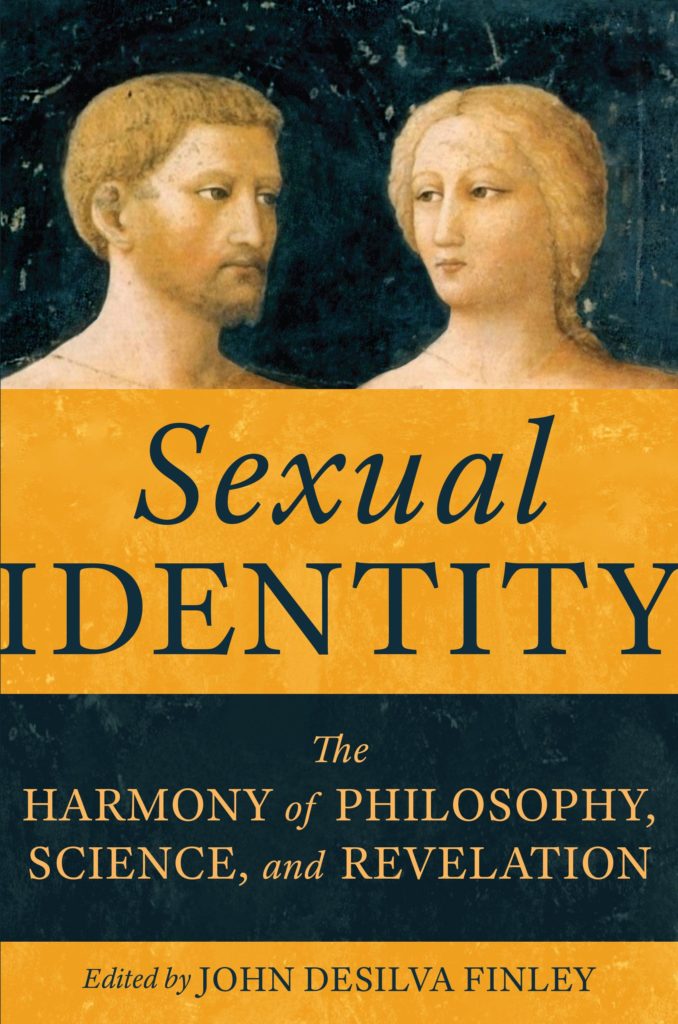
The spousal meaning of the body, John Paul II explains, is ordered to an end: the communion of one flesh. This communion is a matter of choice and freedom because it involves the reciprocal self-gift of persons. The pope writes,
We read, in fact, “A man will leave his father and mother and unite with his wife.” While the man, by virtue of generation, belongs “by nature” to his father and mother, “he unites,” by contrast, by choice. The text of Genesis 2:24 defines this character of the conjugal bond in reference to the first man and first woman, but at the same time it does so also in the perspective of man’s earthly future as a whole.
Man and woman were created for communion, and neither man nor woman fully find themselves apart from a sincere gift of self. The body of the person has a spousal meaning independently of any subjective act affirming it. Welcoming this call is another matter. A person may perceive something of the spousal meaning and choose to reject it or subvert it or overcome it. The gift of the other person can be welcomed or rejected. The spousal meaning of the body can be denied. These choices are not uncommon after the Fall of Adam and Eve. It is the religious and spiritual response that will welcome the call and accept the design of it. It understands the spousal meaning as open and accepting of the other and not closed in on itself. Before the sin of Adam and Eve, there was a freedom and deep capacity for the gift of self and the communion of persons.
St. John Paul maintains that in the realization of the spousal meaning of the body through the communion of persons, we find the fullness of the divine image in humanity. The revelation that God is the loving communion of the Father, Son, and Holy Spirit sheds much light on human persons created in the image of God.
The first man and woman’s creation in the image of God means not only that each of them individually is like God, as a rational and free being. It also means that man and woman, created as a “unity of the two” in their common humanity, are called to live in a communion of love, and in this way to mirror in the world the communion of love that is in God, through which the Three Persons love each other in the intimate mystery of the one divine life.44 In other words, the communion of persons in love as man and woman, who as man and woman share a common nature but differ from each other in their personal sexual identity, reflect the communion of love in the three persons of the one God, who are one in substance but distinct persons. Here again, we see how constitutive sexuality is for being a person created in the image of God. We stand in relation to others not in a generic way but as a woman or man. Sexuality specifies our relationality. The Triune God, who exists as a communion of three related divine persons, does not create a divine image that thrives in solitude. To speak of Adam and Eve as existing in the image and likeness of God means, of course, that human persons are called to exist “for others, to become a gift.”45 Sexual difference in its giving and receiving belongs to an ordered communion that is iconic of the Triune God, a communion of divine persons, in perfect love.
The spousal meaning of the body has a limit placed on it because of the Fall of our first parents. The words of Jesus in Matthew 19:8, “from the beginning it was not so,” instruct both the Pharisees and us that something changed for the worse. The consequences of the tragic disobedience of Adam and Eve include not only death and corruption but also the burden of lust for them and their descendants. The First Letter of the Apostle John (2:16) tells us, “For all that is in the world, the lust of the flesh and the lust of the eyes and the pride of life, is not of the Father but is of the world.” Adam and Eve found themselves naked and ashamed, which manifested the “uneasiness of conscience connected with lust.” Fearing that they might be looked on by the other as an “object” rather than as a creature willed for their own sake, Adam and Eve hid their nakedness, removing from one another’s sight their genitalia, the clearest bodily expression of the sexuality that affects the whole being of their persons.46 Now, ironically, the first couple find themselves alienated from one another on account of their sexuality. Genesis 3:16 testifies to this break and threat to the “unity of the two” with the words “your desire shall be for your husband, and he shall rule over you.”
Here is a fundamental loss, John Paul II explains, in the communion of persons. Through the entrance of concupiscence, or disordered desire, into humanity, Adam and Eve and their descendants bear within themselves the constant “inclination to sin,” the tendency to go against the natural and moral structure that corresponds to the truth of the body as persons called to communion. Reflecting on the meaning of concupiscence, John Paul observes that it involves the loss of an interior freedom to give, to make a gift of self, because concupiscence reduces the other person to an object of satisfaction:
Concupiscence brings with it the loss of the interior freedom of the gift. The spousal meaning of the human body is linked exactly to this freedom. Man can become a gift—that is, man and woman exist in the relationship of the reciprocal gift of self—if each of them masters himself.
In other words, genuine freedom requires that a person has the spiritual maturity to be master of him- or herself; for only persons in possession of themselves can freely give themselves in love. It is precisely this kind of freedom that is lost in the Fall. With the loss of this freedom, it becomes difficult to look upon the otherness of masculinity or femininity as gift, but it becomes quite easy to see it as a threat to be reined in or dominated: “Sexuality is no longer freshly surrounded by the powers of the soul, which allow the body to radiate the beauty of the person, but can become an expression of the will to power, of the one human being’s domination over another to the point of making the other a thing.”
The relationship between man and woman is distorted. The human heart now becomes a battlefield between lust and love. In this way, the subjection of man and woman to lust puts a limit on the spousal meaning of the body. This meaning is not just a conceptual reality. It is, at the same time, the way of living in the body in concrete interpersonal relations. It remains true objectively that the body manifests the truth that man and woman are created for one another and are called to communion; however, in the fallen state, the interior spiritual condition of man and woman make it difficult for them to live according to this objective truth. Essential to this communion is the freedom for it, which is nothing less than the freedom for love.
Lawrence J. Welch, PhD, is professor of Theology at Kenrick-Glennon Seminary, where he has taught since1994. For the last twenty-six years he has taught courses in theological anthropology, the sacrament of marriage, and ecclesiology. He has published articles in the Thomist, Nova et Vetera, Theological Studies, New Blackfriars, and other journals. He is active in the Academy for Catholic Theology and served on its Board for two terms.
You Might Also Like
Sexual Identity: The Harmony of Philosophy, Science, and Revelation assembles different voices into a coherent whole. Written by experts for non-specialists, it gives an interdisciplinary vision of the human sexual identity, male and female. It offers the wisdom we need to see through the deceptions that afflict our time.


